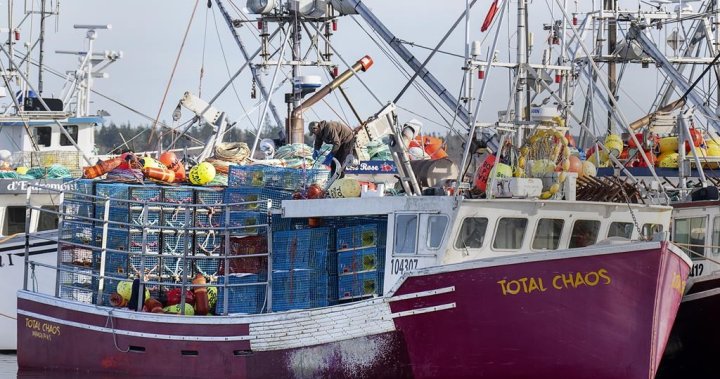Paragraph 1: Trump’s Second Term and Trade Uncertainty
The inauguration of Donald Trump for a second term as President of the United States has injected a renewed sense of uncertainty into the Canadian seafood industry, particularly in Atlantic Canada. While Trump has temporarily held off on his previous threat to impose a 25% tariff on Canadian seafood exports, opting instead to initiate a study of trade issues, the underlying message remains clear: Canada needs to diversify its markets. This decision by the US administration has sparked concern within the Canadian seafood sector, as the US represents a significant market for their products.
Paragraph 2: The Economic Impact of Potential Tariffs
The potential economic consequences of US tariffs on Canadian seafood are substantial. In 2023, Quebec and Atlantic Canada combined exported approximately $1.6 billion worth of lobster to the US, highlighting the importance of this market for the region’s economy. The imposition of a 25% tariff would severely impact the profitability of these exports, leading to potential job losses and a decline in income for coastal communities that heavily rely on the seafood industry. This threat underscores the urgency for the Canadian seafood sector to explore and cultivate new international markets.
Paragraph 3: Diversification Strategies and Market Exploration
In response to the looming threat of US tariffs, the Canadian seafood industry is actively pursuing diversification strategies. A trade mission to Europe is scheduled within the next two weeks, aimed at exploring and expanding market opportunities within the European Union. However, industry experts emphasize the need to broaden the scope of diversification efforts beyond Europe, advocating for the development of markets in Asia and the Middle East. These regions offer significant potential for growth and could provide valuable alternative markets for Canadian seafood exports, reducing reliance on the US market.
Paragraph 4: Vigilance and Adaptability in the Face of Trade Risks
Experts in international trade emphasize the importance of vigilance and adaptability for Canadian businesses, particularly those in Atlantic Canada, over the next four years. The uncertainty surrounding US trade policy necessitates a proactive approach to risk management and market development. Businesses need to closely monitor trade developments, assess potential risks, and adapt their strategies accordingly. This includes exploring new markets, investing in value-added processing, and enhancing product competitiveness to mitigate the potential negative impacts of trade disruptions.
Paragraph 5: The Importance of Government Support and Industry Collaboration
The Canadian government has a crucial role to play in supporting the seafood industry’s diversification efforts. This includes providing financial assistance for trade missions and market development initiatives, facilitating trade agreements with new partner countries, and offering support for businesses to adapt to changing trade landscapes. Collaboration between government, industry associations, and individual businesses will be essential for navigating the challenges and opportunities presented by evolving global trade dynamics.
Paragraph 6: Long-Term Strategy for a Sustainable Seafood Sector
The current situation underscores the need for a long-term strategy to ensure the sustainability and resilience of the Canadian seafood sector. This strategy must encompass market diversification, value-added processing, sustainable harvesting practices, and investment in research and innovation. By adopting a proactive and forward-looking approach, the Canadian seafood industry can strengthen its position in the global market, mitigate risks associated with trade uncertainties, and ensure its long-term economic viability. This requires ongoing dialogue and collaboration between government, industry stakeholders, and academic institutions to develop a comprehensive and sustainable roadmap for the future of the Canadian seafood sector.

